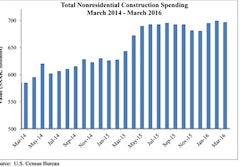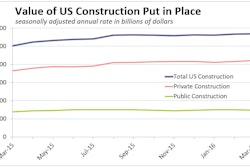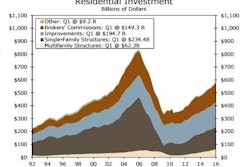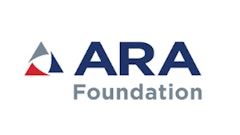With nearly complete data for Q1 2016, the recession model that the Wells Fargo Economics Group prefers to use remains elevated relative to the past few years.
Wells Fargo uses a Probit model to predict the chances of a recession during the next six months. The model utilizes the Leading Economic Index, the S&P 500 index and the Chicago-PMI employment index as predictors. They say it performs well. It started predicting (in real-time) a significantly higher probability of recession 2007 (58% chance in Q3 2007). And Wells Fargo never joined the “double-dip” camp back in 2010-2012, largely because its Probit model did not indicate a likelihood of recession.
The most recent data (through March 2016) suggests an elevated probability – about 26% – of a U.S. recession during the next six months. The trend for the predictors, such as the S&P 500 and the LEI, has been weak the past few months. Prior to March’s 0.2% increase, the LEI had fallen for three months in a row for the first time since the Great Recession. Nevertheless, recent improvement in these indicators toward the end of Q1 offers some signs of positive momentum heading into the second quarter. Although it is the highest reading in the post-Great Recession era, the probability is still well below the threshold of above 50% for a recession call.
For decision makers, the elevated recession probability is a more serious sign, as the quarterly probability has not crossed the 20% line in the post Great-Recession era. Given that the recession probabilities based on the preferred model, and the average of all other models are somewhat elevated, Wells Fargo advises that it is not wise to dismiss recession risk.
Wells Fargo is calling for Q1 real GDP growth to be just 0.1%, which is consistent with elevated recession probabilities and well-below the average quarterly growth rate of about 2% over the past five years.



















